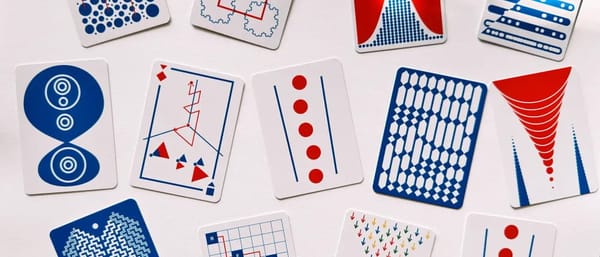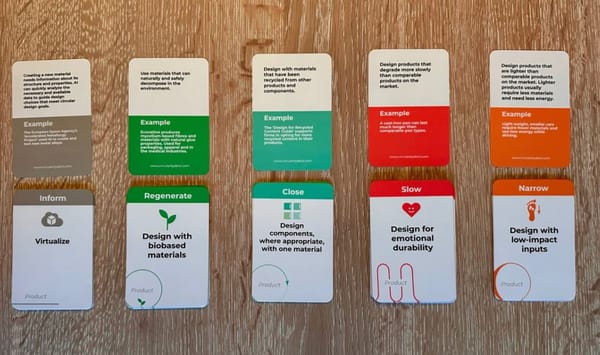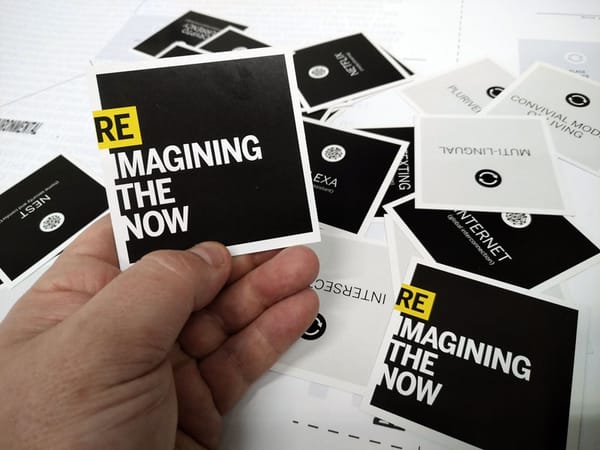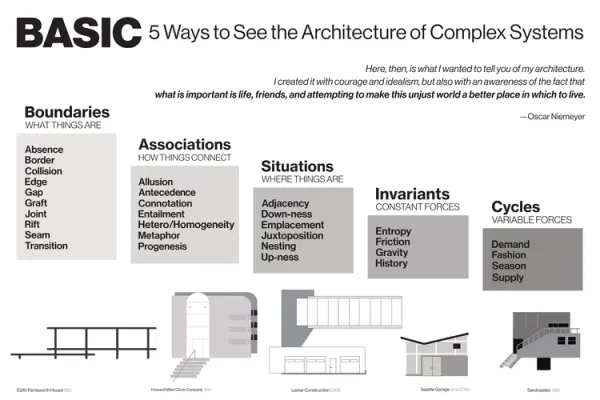№ 77 | Branching Scenarios and eLearning, Surviving Design Projects, Ursula K. Le Guin on Growth, Quests (Not Goals), I’m Voting Postcards, and Levels of Automation
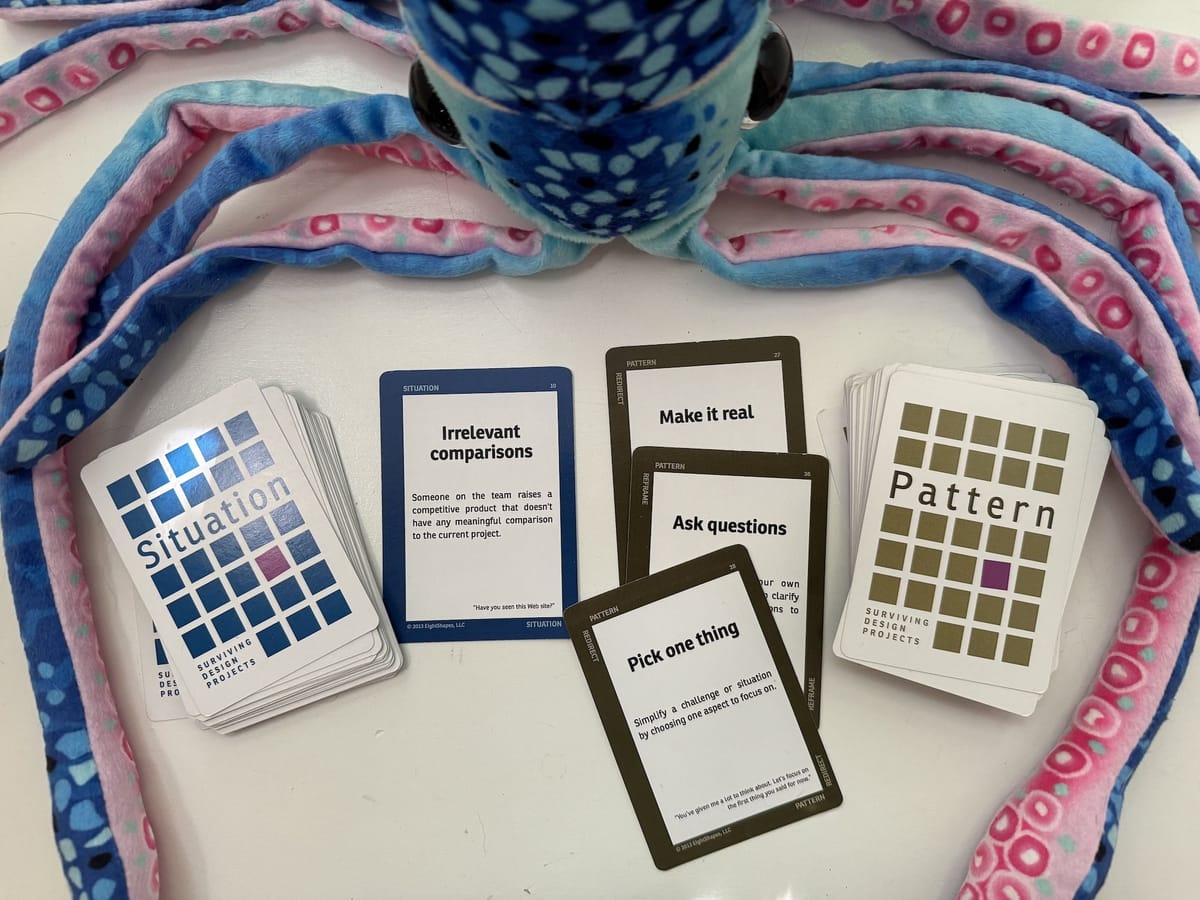
Branching Scenarios and eLearning
In 2020, I did a deep dive into how narrative games could be used for learning purposes, which left me with a deep appreciation for (and small collection of) CYOA books, gamebooks, interactive fiction, solo RPGs, and similar experiences with branching paths.
Anyway, this post on Why I Don't Use Templates for Branching Scenarios” left me with a language for describing different types of branching scenarios— Time cave, Gauntlet, Branch and Bottleneck—and guidance on which to use (or not to use) for eLearning purposes.

Surviving Design Projects
An oldie but a goodie.
At its core, Surviving Design Projects from Dan Brown is a game about navigating difficult situations. There’s a lot to love about this. First, it focuses on situations as a source of conflict (and here, Dan has done a great job cataloging a bunch of all-too-familiar conflicts, many that apply to disciplines beyond design). Second, it encourages reflection and dialogue about how we might respond to each conflict. But, you’re not left on your own to imagine a response; instead, the Pattern cards suggest ways to respond—but there’s nothing prescriptive here (something else I deeply appreciate). Some patterns might fit better than others, depending on the situation. And the judge for that round (aided by the oohs and ahhs of fellow players) gets to decide on the best response. Dan writes more about his game in this recent LinkedIn post (which is what brought this back to my attention!).

[Essay] “Clinging Desperately to a Metaphor”
File under metaphors as things to think with. Ursula K. Le Guin is (was) a brilliant writer and thinker. The Dispossessed is probably the best book I read in 2023. Anyway, this quote has been living in my head for the last week:
It’s as silly for me to write about economics as it would be for most economists to write about the use of enjambment in iambic pentameter. But they don’t live in a library, and I do live in an economy. Their life can be perfectly poetry-free if they like, but my life is controlled by their stuff whether I like it or not.
With this disclaimer, she goes on to critique (tear down?!) the economic focus on growth, asking if we’re “Clinging Desperately to a Metaphor” that we need to let go of. The final words of this essay are especially poignant, even more so in 2024:
So what is our new metaphor to be? It might be the difference between life and death to find the right one.
(There’s a creative exercise for us—imagine new metaphors to think about a more sustainable economy…)
Speaking of metaphors…
Do Quests, Not Goals
This is a simple shift in language, but a big shift in mindset: Try thinking of your goals as quests! That’s the proposal of this short post “Do Quests, Not Goals”. Problems with the hero myth aside, this is a fantastic way to shift your perspective on an otherwise daunting task that lies ahead. Time to go make some plans draw a map!

I’m Voting Postcards
Postcards as things to think with? Why not! I love that these I’m Voting Postcards use what is often a personal medium, to open up and frame a conversation, on what can be a very difficult topic with some people. But what I love more about this project is how the act of creating the postcards was, for creator Chris Glass, a way to “organize my thoughts.” I often talk about engaging with ‘playful things to think with’ after they’ve been created, but neglect to mention the incredible learning that happens for the creator.

See also Dear Data, a year-long, analog data drawing project, from a few years back.
Levels of Automation
I recall years ago, when self-driving cars were all the rage, stumbling across the 6 Levels of Vehicle Autonomy—ranging from 0 (fully manual) to 5 (fully autonomous)—adopted by the U.S. Department of Transportation. I appreciated how this scale took an overly simplistic conversation and showed how “autonomy” for vehicles is more nuanced than self-driving or not.
Anyway, here’s a reminder from Josh Lovejoy that “Designing with AI isn't all-or-nothing.” And… a similar framework for thinking about automation:
A 24 year old HCI framework (citation linked below) continues to be my go-to reference. 4 distinct phases of automation, each with 10 levels of human control that you can choose to dial up or down.

There’s more AI related goodness in this post “When are we going to start designing AI with purpose?”, and here’s the academic source of this framework.
Lots of r4nD0M FUN stuff this time!
- Whoa! 🤯 I was mesmerized watching Mars Volta's drummer tackle a song she’s never heard before—Limelight by Rush!.
- Here’s a newspaper that gives back to the Earth - literally.
- Adam Savage explores Why Star Trek's Graphic Design Makes Sense.
- A castle, made of fonts?


